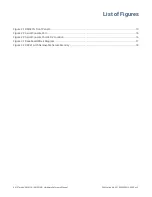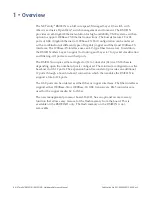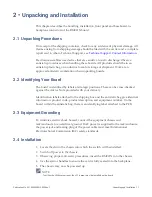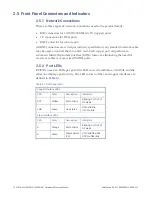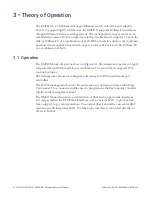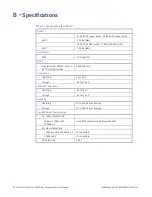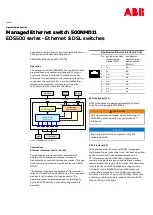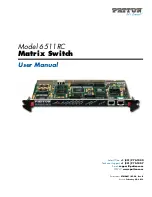
Publication No. 597-0000000013-000 Rev. F
Theory of Operation 19
3.2 Switch Software Environment
The Switch Control services execute within the context of a standard Linux kernel.
Using Linux as the basis for services has a number of advantages.
On powerup, the Linux kernel goes through the basic initialization steps. Local
configuration information is loaded from files saved on the switch.
The operator interface for switch control and monitoring is the console program that
provides a Command Line Interface (CLI) for configuration and control of the
switching fabric.
The console may be accessed from either the RS232 port or via a network session
(Telnet or SSH).
3.3 Switching Fabric
The fundamental feature of the RM921N is a state‐of‐the‐art IPv6
-capable Switch
Fabric. Switch Fabrics are distinguished from hubs or repeaters by allowing multiple
ports to be active simultaneously. The fabric is capable of full wire speed switching,
allowing a maximum aggregate throughput that is the sum of all the ports. Use of a
Switch Fabric increases both overall capacity and reduces typical latency because
multiple ports can forward packets at the same time. A packet will only be delayed if
there is already activity on the destination port. Packet switching is at Layer 2/3 and
packet routing at Layer 3 (IP routing).
3.3.1
IPv6 Support
The RM921N provides support for IPv6 routing. Management interface can be on
both IPv6 and IPv4 networks (i.e., assigned both types of addresses).
3.3.2
Layer 2/3
Address information (i.e., packet source and destination) is in headers at the
beginning of each packet. The headers are sequential: Layer 2 followed by Layer 3
and Layer 4 information. During initialization (or dynamically by operator control),
information is entered into the fabric that controls packet processing. As each packet
arrives at the switch fabric, header information is examined and compared with the
stored information to determine the port(s) to which the packet should be
forwarded. Once sufficient header information has been processed, the packet will
be sent to the resolved port(s).
Layer 2 switching uses only the MAC address of each network interface (i.e.,
network connected host system) to guide packets through the fabric. As each packet
arrives at the switch, its source (L2 or MAC) address is examined, and the
information stored. For Layer 2 switching, no outside information (e.g., IP addresses)
is necessary. No configuration or setup is required, making installation of the switch
simple.


